Physical Address
304 North Cardinal St.
Dorchester Center, MA 02124
Physical Address
304 North Cardinal St.
Dorchester Center, MA 02124
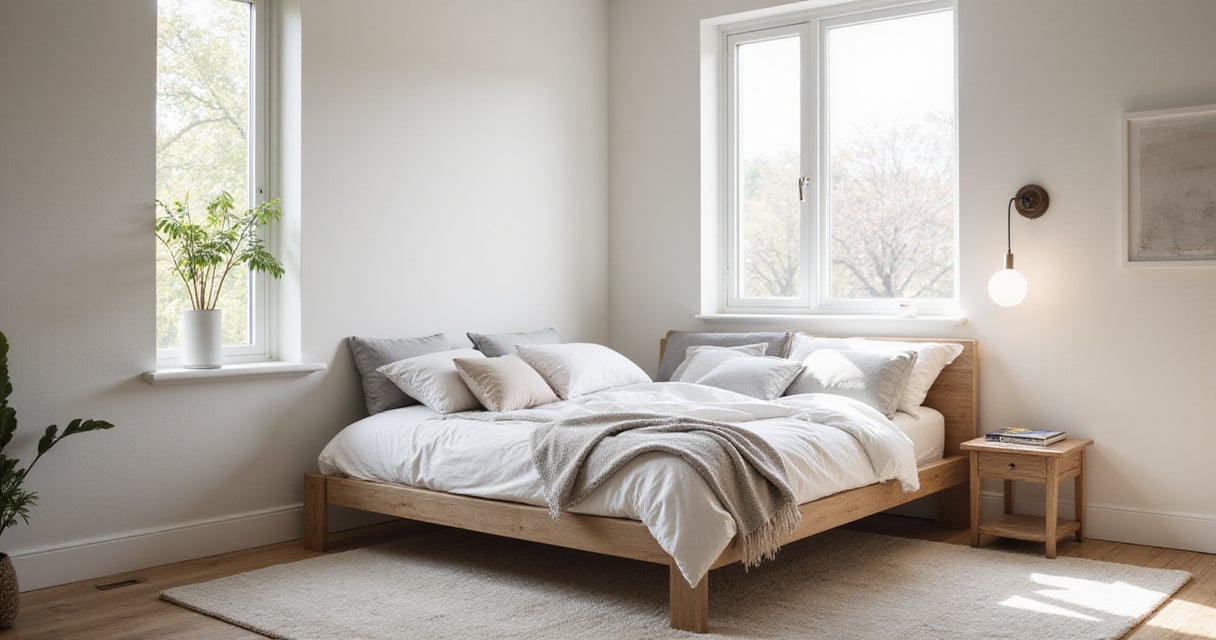
Discover 20 clever bedroom decor ideas for small rooms that maximize space and style. Transform your compact bedroom into a spacious, organized retreat today.
Living in a home with history means embracing its quirks. And often, one of those quirks is a charmingly small bedroom. Before modern notions of sprawling master suites, rooms were built to a more human, practical scale. The challenge for us, as stewards of these spaces, isn’t to fight their compact nature but to work with it, preserving the soul of the room while adapting it for the way we live now.
What really gets me is when I see a beautiful Victorian or a cozy Craftsman bungalow bedroom treated like a blank, modern box. The goal isn’t to erase the past. It’s about making thoughtful, historically-informed choices that create a feeling of openness and serenity without sacrificing the very character we fell in love with. It’s a balancing act, for sure. But it’s one you can master. Let’s start from the ground up—with the largest piece of furniture in the room.
The sheer bulk of a modern bed with a massive headboard and footboard can absolutely devour a small historic bedroom. It feels visually heavy and fights the delicate proportions of older architecture. This is why I often guide clients toward a lower-profile bed. By sitting closer to the floor, it creates more visual space above it, making the ceiling feel higher. It’s a simple trick of perception that really works.
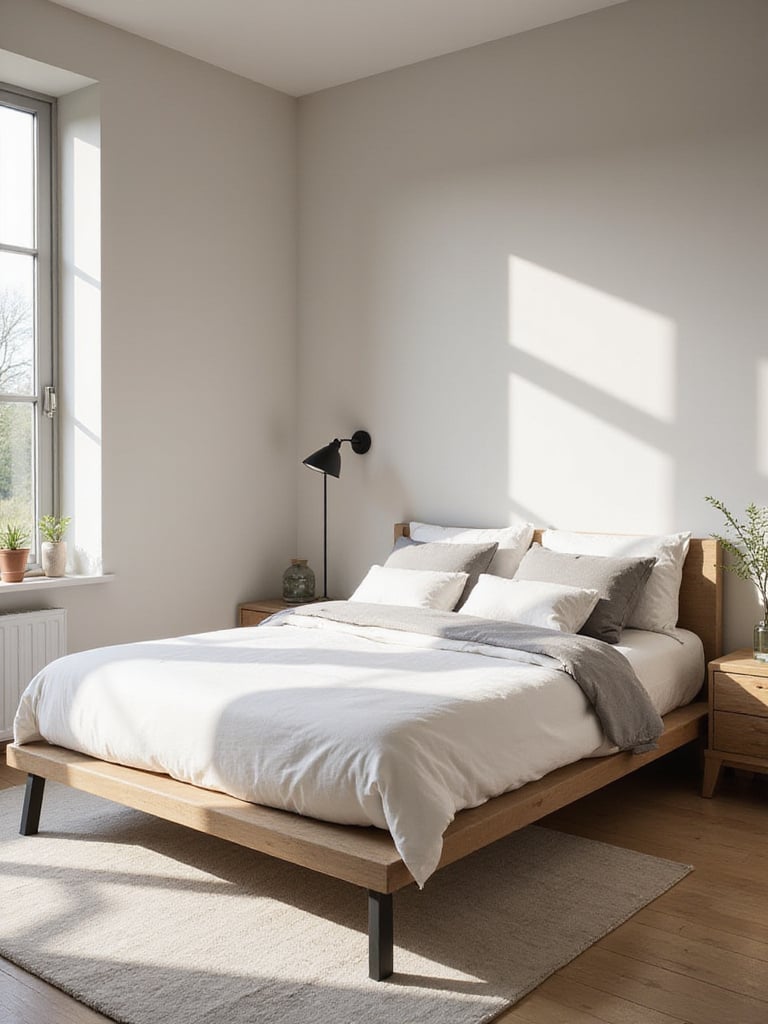
But—and this is a big but—not all low-profile beds are created equal. I’ve seen ultra-modern, sharp-angled platform beds look jarring in a soft, lath-and-plaster room. The key is to look for clean lines, yes, but with a nod to traditional craftsmanship. Think simple, Shaker-inspired frames in a warm wood or a minimalist upholstered frame in a natural linen. Some even offer integrated drawers, a modern convenience that echoes the practicality of an old sea chest or a trundle bed.
Finding that bed is a great first step, but what about the clutter that accumulates right next to it? Those bedside tables can eat up precious floor space and make a small room feel hemmed in.
Here’s where we can borrow a contemporary idea and adapt it with historical sensitivity. Traditional nightstands, bless their hearts, plant four legs firmly on your beautiful, perhaps original, floorboards. This visually halts the eye and chops up the space. Wall-mounted or “floating” nightstands, on the other hand, create an uninterrupted sightline across the floor, which instantly makes a room feel wider and more airy.
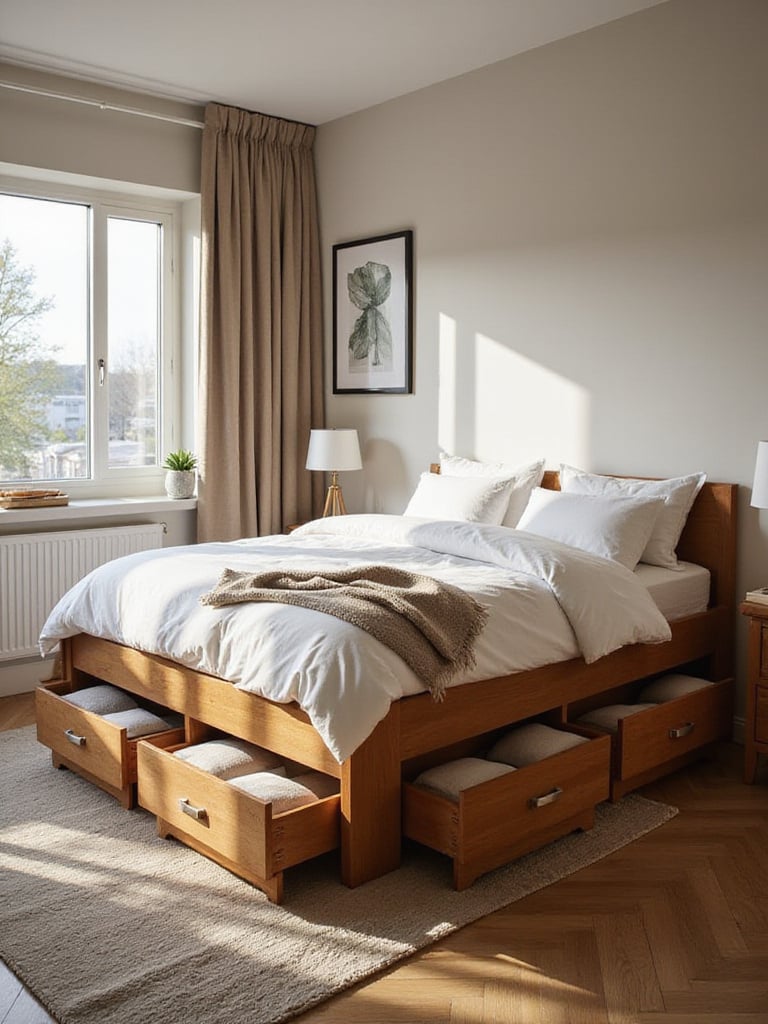
Now, I can already hear the sharp intake of breath from fellow preservationists. “Drill into my original plaster walls? Never!” And I get it. This is where it gets tricky, but not impossible. The trick is to do it with immense care. Often, you can find a stud, even in a lath-and-plaster wall (it just takes a good stud finder and a bit of patience). For a less invasive approach, I once had a client mount a beautiful piece of reclaimed oak horizontally on the wall and then attach two small floating drawers to that, minimizing the number of anchor points. It provides the surface area you need for a book and a glass of water without consuming a single square inch of the floor.
Once you’ve cleared the floor, the next logical step is to look up and claim the vertical space that’s almost always underused.
When you can’t build out, you have to build up. This isn’t a new concept; think of the grand, towering bookcases in historic libraries. They understood that vertical lines draw the eye upward, creating an illusion of height and grandeur. A tall, slender bookcase—sometimes called a barrister or lawyer’s bookcase—is a fantastic, period-appropriate way to add a ton of storage on a tiny footprint.
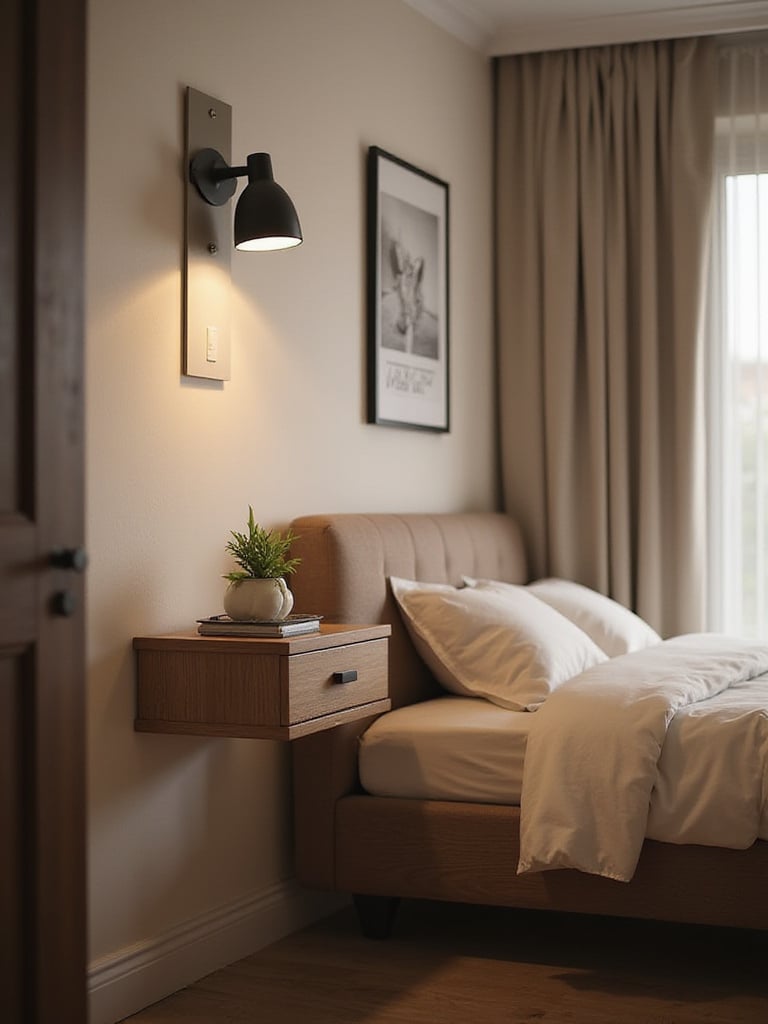
I particularly love using them to flank a window or a doorway, which frames the architectural feature rather than hiding it. The key is to avoid anything too bulky. Look for something with a shallow depth. And don’t just jam it full of books. Mix in some decorative objects and attractive baskets or boxes. This breaks up the visual mass and lets the piece breathe. What you’re doing is creating functional storage that also serves as an elegant architectural element in its own right.
Of course, not all storage needs to be tall. Some of the most useful pieces are the ones that work double-duty right in the middle of the room.
The storage ottoman is the modern descendant of the hope chest or steamer trunk. It’s one of the hardest-working pieces you can own in any home, but it’s an absolute hero in a small, historic one. Placed at the foot of the bed, it can be a spot to sit and pull on your shoes, a surface to lay out clothes for the next day, and a hidden repository for bulky items like extra blankets or winter sweaters.

What makes this work so well in a period setting is choosing the right material. A simple linen-upholstered ottoman can add softness, while one in worn leather or even a tufted velvet can feel incredibly rich and appropriate for a Victorian or Edwardian home. On one project in a 1920s Tudor revival, we found a beautiful dark wood chest with a cedar lining at an antique shop. We simply had a custom cushion made for the top. It provided storage, seating, and a story—you can’t ask for much more than that.
That same sense of multi-functionality applies to your windows, which do more than just let in light. They’re an opportunity to shape the perception of the entire room.
This is probably one of the oldest tricks in the design book, and for good reason: it works every time. Most people hang a curtain rod right on the window frame. This visually squashes the window and, by extension, the room. To create a sense of height and expansiveness, you need to treat the window and its dressing as a single, grand gesture.
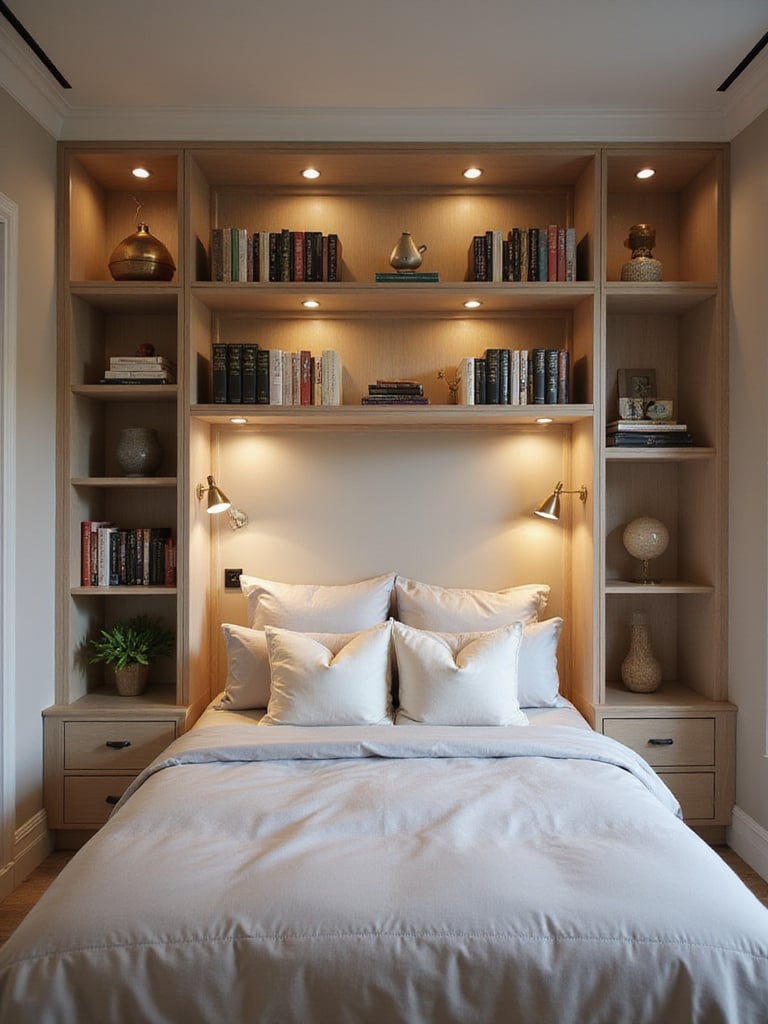
Here’s what to do: mount the curtain rod at least 4-6 inches above the window frame—even closer to the ceiling if you can. Then, extend the rod 6-8 inches or more on either side of the frame. When you hang long curtain panels (they should just skim the floor) from this higher, wider position, it tricks the eye into thinking the window itself is much larger. For fabrics, I lean toward natural materials like linen or light cotton in colors that blend with the walls. This allows light to filter through, giving you privacy without creating a heavy, dark block of fabric that sucks all the light out of the room. It respects the window as the room’s source of light, amplifying its effect.
Once the room’s basic elements feel larger, you can add personality without adding clutter. This is where art comes in.
The idea of a gallery wall can feel chaotic, but the historical precedent is the “salon-style” hang, where paintings covered a wall from floor to ceiling. Our modern version is just a bit more restrained. Instead of scattering small pictures around a room—which fragments the space and makes it feel busy—concentrate them on a single wall to create a powerful focal point. The wall behind your headboard is a perfect candidate.
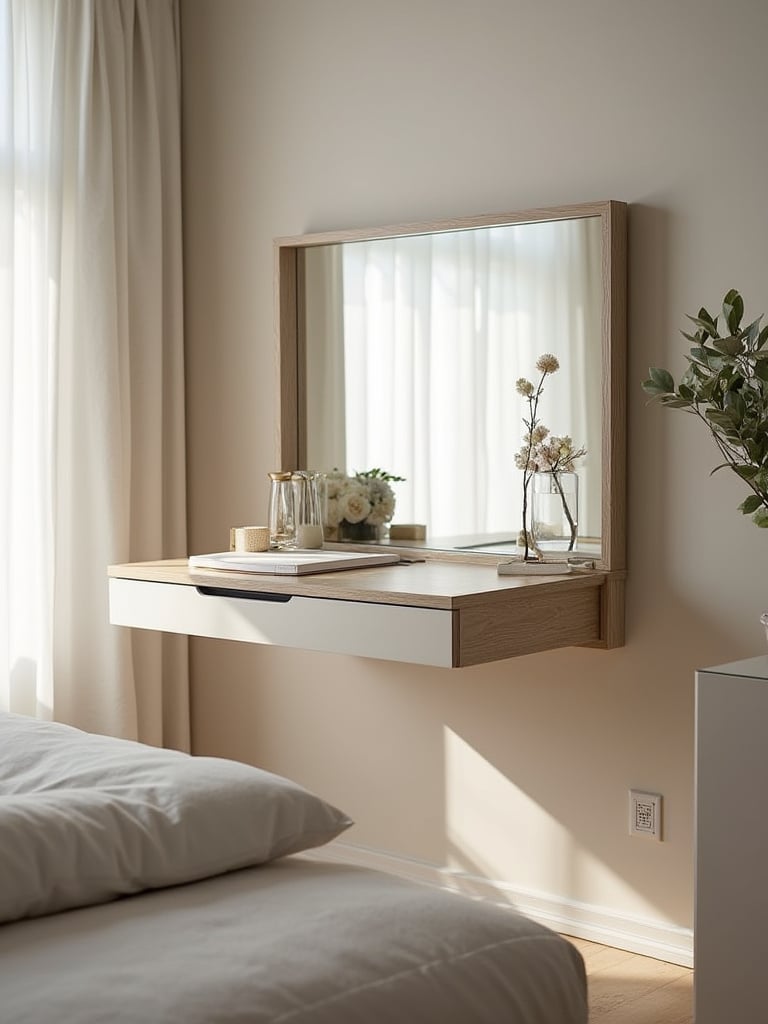
To keep it from looking like a jumble, create a sense of unity. This is the part that makes it look curated, not cluttered. Maybe you use all black frames, or all brass. Or perhaps the frames are all different, but the matting is the same color. On a recent project, we created a gallery wall of black-and-white architectural drawings of the home itself, which added a wonderful personal and historic layer. Lay everything out on the floor first to get the spacing right before a single nail touches your precious walls.
This intentional approach also applies to your lighting, which shouldn’t be an afterthought.
Bedside table lamps are classic, but let’s be honest, they eat up the entire surface of a small nightstand. This is where wall-mounted sconces are a brilliant solution, and they have deep historical roots. Before electricity, rooms were lit with candle or gas sconces mounted to the wall. Today’s electric versions free up that valuable bedside real estate for your essentials.
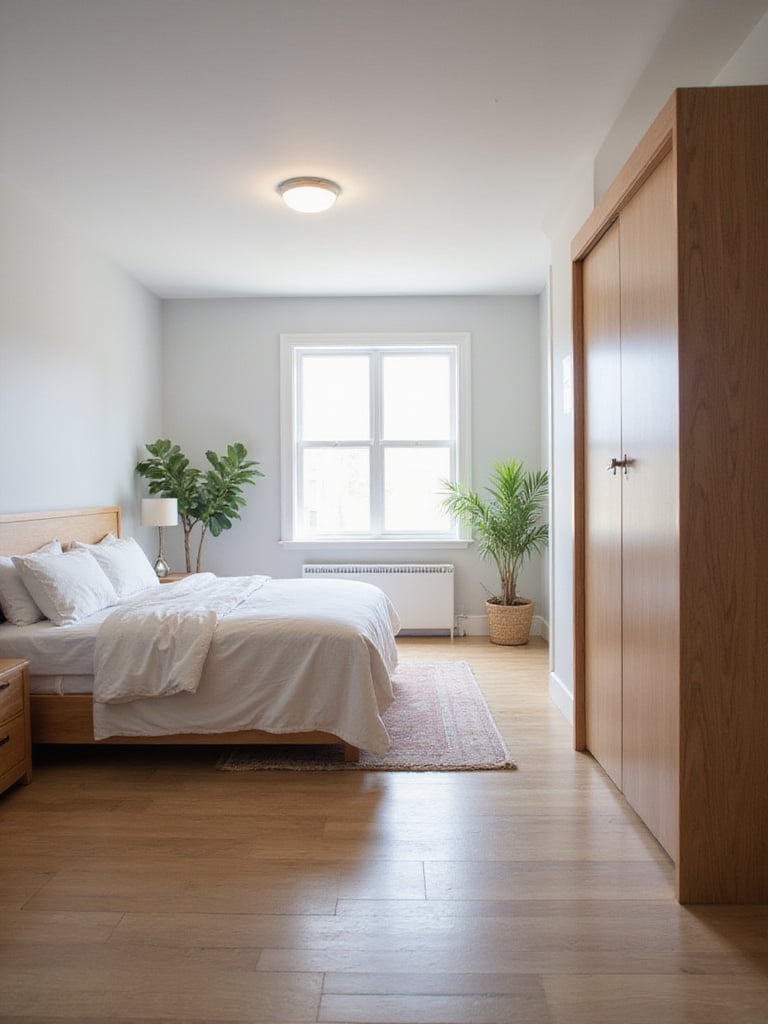
For a period home, the style of the sconce is paramount. You can find beautiful reproductions of Art Deco, Arts and Crafts, or Colonial-era sconces. Look for swing-arm models that allow you to direct the light right onto your book. And if you’re hesitant about cutting into walls for new wiring, don’t fret. Many companies now make gorgeous plug-in sconces that offer the same space-saving benefits without the need for an electrician. You can even hide the cord behind the headboard or a piece of furniture. It’s a small change that makes the entire bedside area feel cleaner and more deliberate.
That same deliberate approach should guide your biggest decision: the color of your walls.
The common advice is “paint a small room white.” It’s not bad advice, but frankly, it’s a bit boring and ignores the rich history of color. Yes, light colors reflect more light and make walls visually recede, but you don’t have to live in a white box. Historically, people used color masterfully, even in small spaces. The secret was in the type of paint and the complexity of the pigments.
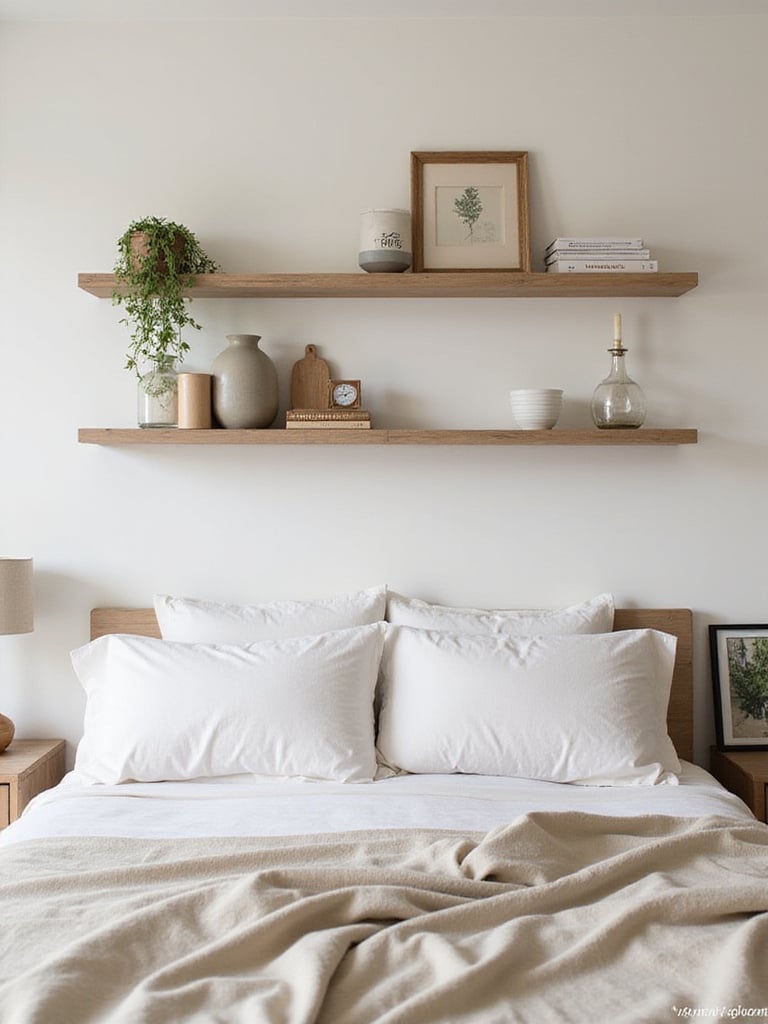
“Instead of a sterile, builder-grade white, consider the historical palettes. A soft gray with a hint of green, a creamy buttermilk yellow, or a pale, dusky blue. These are colors with depth.”
Heritage paint lines like Farrow & Ball or Benjamin Moore’s Historical Collection offer colors with complex undertones that shift beautifully in the light. Another fantastic option for older homes is limewash or milk paint, which have a soft, chalky finish that gives walls a texture and luminosity you just can’t get from standard latex paint. It creates a breathable, gentle envelope of color that feels both spacious and soulful.
After color, the next best tool for creating the illusion of space is reflection.
Mirrors are pure magic in a small room. This isn’t just about checking your reflection; it’s about architectural deception. A large mirror placed opposite a window will capture and bounce light all around the room, instantly making it feel brighter and bigger. It also creates a “view” where one doesn’t exist, reflecting the open space of the window and tricking your brain into perceiving depth that isn’t really there.

In historic homes, this was a well-understood technique. Think of the massive, gilded pier mirrors in Federal-style homes, specifically designed to reflect candlelight and double the sense of space. You can get a similar effect with a simpler, large floor-length mirror leaned against a wall. The minimal frame keeps it from feeling fussy, and leaning it avoids the need for heavy-duty wall anchors. I love placing one so it reflects not just the window, but also a beautiful architectural detail, like original crown molding or a charming fireplace.
The principle behind the mirror—creating an illusion of more space—also applies to the very shape of your furniture.
This is such a simple but powerful concept. Furniture that sits flat on the floor, like a solid block, is visually heavy. It stops your eye and makes a room feel weighed down. In contrast, furniture raised up on visible legs—what we call “leggy” furniture—allows you to see the floor continuing underneath it. That little bit of open space creates a sense of airiness and lightness.
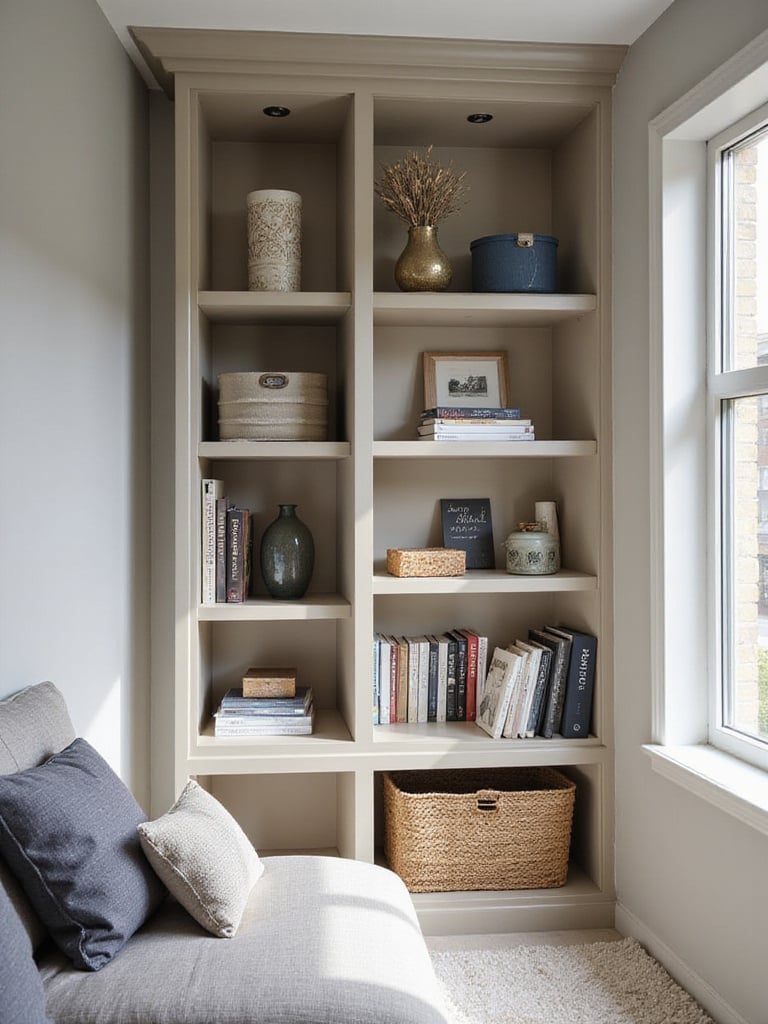
So many elegant historical styles are built on this principle. Think of the delicate, tapered legs of a Hepplewhite dresser, the graceful cabriole leg of a Queen Anne chair, or the slender, turned legs of Mid-Century Modern pieces. When you choose a dresser, an armchair, or even a bed frame with visible legs, you’re allowing light and air to circulate visually, which prevents the room from feeling crowded. You’re not losing any function, but you’re gaining a whole lot of breathing room.
This idea of visible floor space ties directly back to one of the most practical storage areas of all.
The space under the bed is some of the most valuable, and most often wasted, real estate in a bedroom. In the past, people would slide simple wooden boxes or trunks under the bed for storage. Today, we have more sophisticated options, but the principle is the same. Utilizing this space can often eliminate the need for an entire piece of furniture, like a bulky dresser.
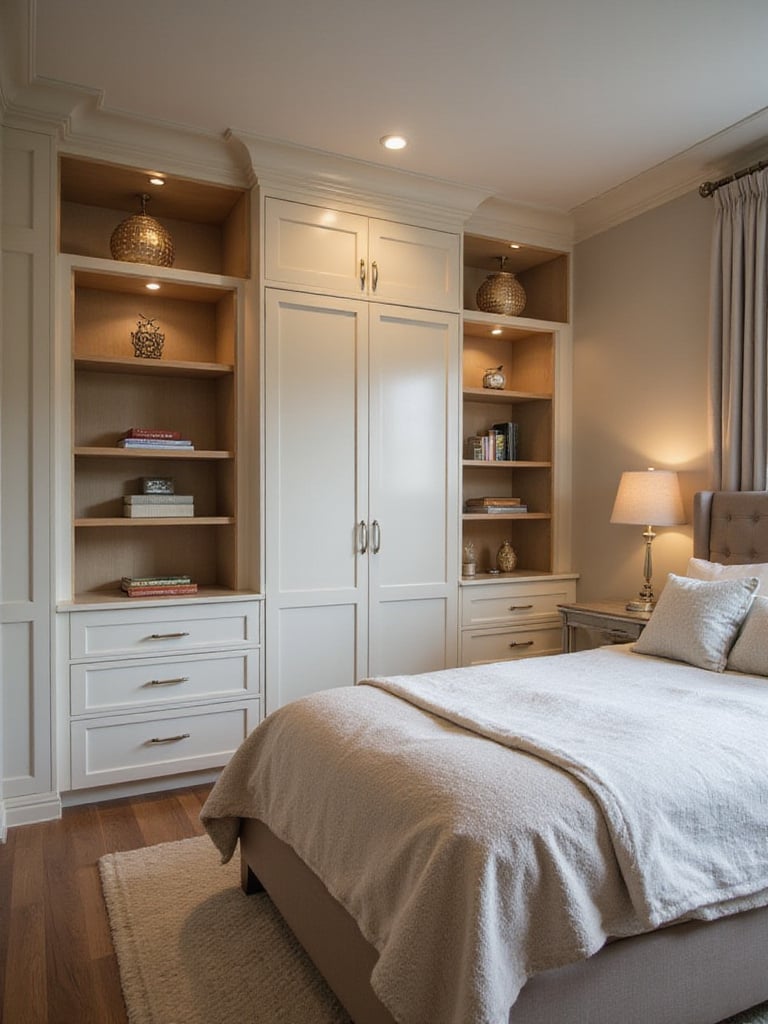
If you’re buying a new bed, consider one with built-in drawers or a hydraulic lift mechanism that raises the entire mattress to reveal a massive storage compartment. If you’re working with your existing bed frame, look for shallow rolling bins or lidded boxes designed to slide underneath. I suggest finding containers in a neutral color or even one that matches your floor, so if they peek out, they don’t create visual clutter. This is the perfect spot for off-season clothing, extra linens, or anything you don’t need to access every single day.
When you’ve maxed out the floor, it’s time to look at the walls again, but for a different kind of storage.
While bookcases are great, sometimes you just need a single surface for a few items. Floating shelves are a minimalist way to get storage without the visual bulk of a full cabinet. They seem to hover on the wall, providing a functional perch for books, plants, or a few meaningful objects without taking up any floor space.

But where you put them matters. Installing a long shelf high on a wall, a few feet below the ceiling, can create a wonderful display line for items you don’t need often. A series of shorter shelves staggered up a narrow wall can turn an awkward space into a feature. I particularly love using a single, beautiful shelf made from reclaimed wood from the house itself, if possible. It connects the new element back to the home’s story. Just be mindful not to over-clutter them. The goal is a light, airy display, not a dense wall of stuff.
All these elements—the shelves, the furniture, the textiles—need to talk to each other. That’s where color comes in again.
In a small space, visual harmony is your best friend. A room filled with a riot of competing colors will feel choppy and chaotic. By limiting your palette to two or three coordinating hues, you create a serene, unified look that allows the eye to travel smoothly around the room, making it feel more expansive.

This doesn’t mean everything has to be beige! You can have a rich, interesting palette. The key is to build it with intention. Start with a dominant, often neutral, color for the walls. Then, choose a secondary color for larger elements like bedding or an upholstered chair. Finally, pick a third, bolder color to use sparingly as an accent in pillows, artwork, or a small decorative object. Historically, palettes were often naturally limited by the cost and availability of pigments, which created its own kind of beautiful harmony. We can learn from that restraint.
With a harmonious backdrop, the next step is to tackle the one area that often creates the most daily clutter: the closet.
Let’s be real: most historic homes have comically small closets. If they have them at all. The closet was not a major feature until the 20th century. This means we have to be incredibly clever with the space we do have. An organized closet isn’t just a matter of being tidy; it’s a strategy for keeping clutter out of the bedroom itself. When everything has a logical home, it’s less likely to end up on a chair or the floor.

Maximize every inch. Add a second rod below the first for shirts and pants. Use slender, matching hangers (it’s a small thing, but the visual consistency is instantly calming). Install shelf dividers, drawer units, and hooks on the back of the door. If you simply don’t have a closet, a beautiful, period-appropriate freestanding armoire can become an architectural feature in its own right, while hiding a multitude of sins. The goal is to make your storage so efficient that it supports a calm, uncluttered bedroom.
Once the storage is handled, you can bring in the soft layers that make a room feel like a home.
Textiles are your secret weapon for adding warmth, texture, and personality without taking up any space. A small room with only hard surfaces can feel cold and sterile, but layering different fabrics makes it feel instantly more inviting and luxurious. This is where you can play with texture inside your cohesive color palette.

Think of a nubby wool throw blanket at the end of the bed, a set of velvet pillows, a soft, natural fiber rug on the floor, and crisp linen curtains. Each material reflects light differently and adds a layer of visual interest that gives the room depth. This allows you to add pattern and character without it feeling overwhelming. Plus, it’s an easy and relatively inexpensive way to change the feel of the room with the seasons.
The right textiles can make a room feel cozy, but the right light can make it feel alive.
A single, harsh overhead light is the enemy of any good room, but it’s especially brutal in a small one. It flattens everything out and creates gloomy corners. The key to good lighting is to layer it. You need three types: ambient (overall illumination), task (for specific activities like reading), and accent (to create mood).

In a small bedroom, this might look like a beautiful, period-appropriate flush-mount fixture on the ceiling for ambient light. Then, add your wall-mounted sconces on either side of the bed for task lighting. Finally, you could add a small picture light over your gallery wall or even a tiny uplight behind a plant for an accent. Putting all these on dimmer switches gives you complete control. You can have the room bright when you’re getting ready or soft and moody when you’re winding down. It makes the room functional for every need and feel twice as sophisticated.
Beyond lamps, think about other ways your walls can work for you.
We talked about shelves, but what about the smaller, everyday items? Jewelry, scarves, the outfit for tomorrow. Leaving these things on a dresser top is a recipe for clutter. Instead, use your vertical wall space. And I have the perfect historical precedent for you: the Shaker peg rail.

Shakers were masters of simple, beautiful, functional design. A simple rail with pegs, installed along a wall, is an incredibly elegant way to hang everything from clothes to hats to small bags. You can find beautiful, handcrafted versions today that look perfect in almost any style of home. For jewelry, instead of a clunky box on your dresser, consider a wall-mounted organizer that can almost look like a piece of art itself. The goal is to get things off your horizontal surfaces and onto the walls in a way that is both organized and attractive.
By using these strategies, you can begin to see your room not as one small box, but as a space with multiple possibilities.
Even in the most compact bedroom, you can create the impression of different “zones” for different activities. This psychological trick makes the room feel larger and more purposeful. You don’t need walls or screens; you just need thoughtful furniture placement and a few visual cues.

For example, a small, comfortable chair and a wall sconce in a corner instantly create a “reading nook.” A bench at the foot of the bed delineates a “dressing zone.” A small area rug can define the sleeping area from the rest of the room. This concept has historical roots in the old “keeping rooms” or single-room cottages where one space had to serve many functions. By assigning a purpose to each part of your room, you give it order and a sense of flow that counteracts the feeling of being cramped.
The success of these zones, however, depends entirely on one final, crucial habit.
This might be the most important—and most difficult—piece of advice. In a small room, clutter is your enemy. A clear surface is a calm surface. When your nightstand, dresser, and shelves are free of random debris, the room instantly feels larger, cleaner, and more restful. The architectural details of the room and the beauty of your furniture can finally shine.

This is less a design tip and more a discipline. Find a home for everything. Use small, attractive trays or bowls to corral the necessary items you must keep out, like keys or a watch. The goal isn’t to live like a minimalist monk (unless you want to!). It’s simply to be ruthless about what deserves to occupy your precious surface real estate. A clear space allows your eye—and your mind—to rest.
Finally, let’s look again at the windows, the eyes of the room, and make sure they are dressed for success.
We’ve talked about how to hang curtains, but the quality and style of the treatments themselves can make or break a small room. Cheap, ill-fitting blinds or heavy, light-blocking drapes can make a historic bedroom feel like a sad motel room. Investing in quality window treatments that are appropriate for your home’s style is critical.

Consider your home’s original details. If you have beautiful, deep-set window trim, an inside-mounted shade—like a simple Roman shade in a natural linen or a woven wood blind—can be a wonderful choice because it doesn’t cover up that historic millwork. Sheer panels, as we discussed, are great for filtering light. The key is to choose something that feels integrated with the architecture, controls light effectively, and supports that airy, uncluttered feeling you’re working so hard to achieve.
Transforming a small bedroom in a historic home is a deeply rewarding process. It’s an exercise in creative problem-solving and a dialogue with the past. By viewing the room’s compact size not as a flaw but as an authentic feature, you can begin to make choices that honor its history while supporting your modern life. It’s about cleverness over consumption, and thoughtful placement over sheer size.
Remember, the goal isn’t to trick people into thinking the room is massive. It’s to create a space that feels calm, functional, and beautifully proportionate. These strategies—from raising furniture off the floor to drawing the eye upward and layering light—all work together to achieve that balance. Start with the one or two that seem most achievable for you. The wonderful thing about a small space is that even a single change can have a dramatic impact. You’re not just decorating a room; you’re continuing its story.